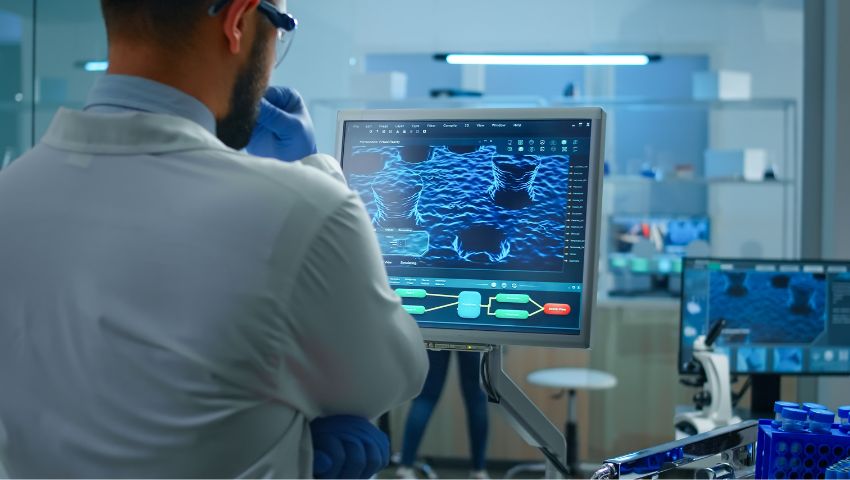
Table of Contents
- Introduction
- What Is a Cryo Bank?
- Why Cryopreservation Matters in Fertility Care
- How Cryo Banks Store and Manage Reproductive Samples
- Key Benefits of Cryo Banks in IVF and Beyond
- Cryo Bank Storage Process Table
- Common Uses of Cryo Banking in Fertility Treatment
- FAQs
- Conclusion
Introduction
Cryo banks play a crucial role in modern fertility treatments by preserving reproductive materials like sperm, eggs, and embryos. With the rise of assisted reproductive technologies (ART), these facilities ensure biological samples are safely stored for future use. IVF software enhances this process by enabling precise inventory control, automated alerts and end-to-end traceability, adding a critical layer of flexibility, security and reliability in reproductive planning.
What Is a Cryo Bank?
A cryo bank is a specialized facility that freezes and stores biological materials at ultra-low temperatures. Using liquid nitrogen (-196°C), it preserves human reproductive cells for extended periods without compromising their quality. These banks operate under stringent safety and labeling protocols to ensure samples are viable, traceable and protected from contamination or mix-ups.
Why Cryopreservation Matters in Fertility Care
Cryopreservation gives patients the freedom to delay parenthood while safeguarding their fertility. It benefits those undergoing medical treatments like chemotherapy, couples planning multiple IVF cycles, or individuals considering egg or sperm donation. By freezing reproductive materials, cryo banks give clinics and patients better control over timing, outcomes and personalized fertility strategies.
How Cryo Banks Store and Manage Reproductive Samples
Reproductive samples are collected, analyzed and cryopreserved using a process called vitrification—a flash-freezing method that prevents ice crystal formation. Samples are then stored in labeled cryo straws or vials, placed inside liquid nitrogen tanks. Digital inventory systems track each sample, ensuring accurate identification and minimizing human error across the entire storage lifecycle.
Key Benefits of Cryo Banks in IVF and Beyond
Cryo banks not only support IVF cycles but also enable fertility preservation for various scenarios. From social egg freezing to donor sperm storage, these banks ensure quality and traceability. The use of digital tools further enhances safety by reducing manual handling, automating logging and enabling real-time monitoring of tank conditions.
Cryo Bank Storage Process Table
| Stage | Description |
|---|---|
| Sample Collection | Eggs, sperm, or embryos collected in sterile environment |
| Quality Assessment | Evaluated for motility, morphology, or fertilization potential |
| Cryoprotectant Addition | Cryoprotective agents added to prevent cellular damage |
| Vitrification/Freezing | Samples flash-frozen using vitrification or slow freezing techniques |
| Labeling and Logging | Each sample is labeled, barcoded and entered into digital inventory |
| Long-Term Storage | Stored in liquid nitrogen tanks at -196°C with continuous monitoring |
Common Uses of Cryo Banking in Fertility Treatment
Cryo banks support a wide range of fertility-related applications:
- Preserving fertility before cancer treatments or surgeries
- Freezing surplus embryos from IVF cycles
- Storing donor eggs or sperm for third-party reproduction
- Social egg or sperm freezing for those delaying parenthood
- Safeguarding genetic material for LGBTQ+ couples using ART
FAQs
Q1. How long can reproductive samples be stored in a cryo bank?
Reproductive samples like sperm, eggs and embryos can be safely stored for over 10–20 years if maintained under ideal cryogenic conditions.
Q2. Are frozen samples as effective as fresh ones in IVF?
Yes. Advances in freezing techniques like vitrification have made frozen eggs and embryos nearly as effective as fresh ones in IVF cycles.
Q3. Is it safe to freeze samples before cancer treatment?
Absolutely. Cryopreservation before chemotherapy or radiation helps protect future fertility and is widely recommended by oncologists and fertility specialists.
Q4. How do cryo banks prevent sample mix-ups?
Cryo banks use strict labeling, barcoding, dual-verification and digital inventory systems to ensure every sample is traceable and error-free.
Q5. Can donor samples be stored long-term?
Yes. Donor sperm and eggs can be stored long-term and used for treatments years after collection, provided consent and legal guidelines are met.
Conclusion
Cryo banks have become foundational to personalized fertility care. Their ability to preserve, protect and provide access to reproductive materials empowers patients with choices and flexibility in family planning.
Vitrify helps ART and cryo banks digitize their storage workflows, automate tracking and ensure compliance—all with real-time control and robust sample security.